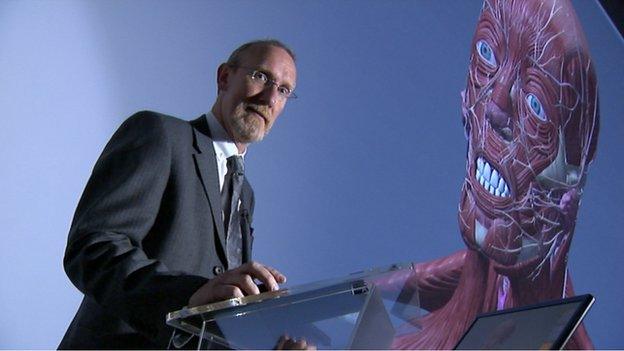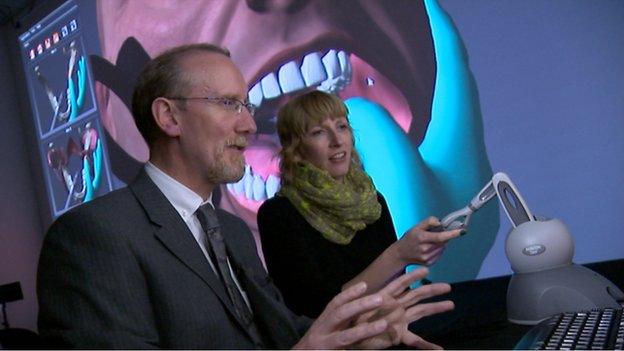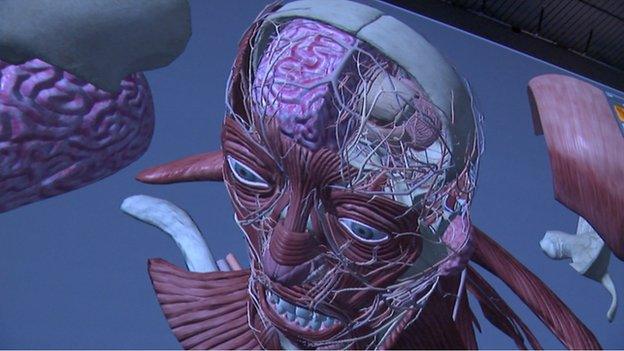Glasgow medics 'fly' through head and neck
- Published
The designer model took three years to create
A model of human anatomy which is claimed to be most accurate in the world has been unveiled by digital designers in Glasgow.
The computer model of the head and neck took three years to create, using data gathered by scanning real human bodies.
It is designed to improve the training of medical students.
"This provides very safe training in a very dynamic and dramatic way," said Prof Paul Anderson.
The professor, who is director of Glasgow School of Art's Digital Design Studio, said: "Our software works with a keyboard and mouse but we can also give someone a games controller, and they can take that and 'fly' into the skull and look around.
"That's very exciting. It's fantastic for learning - it's providing an unforgettable experience."

Prof Anderson said it was an "unforgettable experience."
As well as laser scanning dissected cadavers, the design team went into operating theatres to collect accurate information on the colour of various parts of the anatomy.
"Head and neck anatomy is actually the most complex part of the body," said Prof Anderson.
"One of the benefits of this is that we can repeat safely various procedures. If students make a mistake that's ok. They can fail safely."
The 3D imagery can be connected to a 'haptic' needle, which reproduces the feeling of giving an injection.
Ear, nose and throat surgeon William McKerrow has been using the digital model for some time to teach the next generation of dentist and doctors.

Eleanor Bradford takes the controls for some practise dental work
"When I was a student we spent nearly a year and a half in the laboratory doing cadaver dissection and learning anatomy from textbooks," said Mr McKerrow.
"Now the training can be greatly shortened but the same information assimilated, and it's more pleasant."
The digital imagery is already available to students in Glasgow, Inverness, Stornoway and Dumfries.
There are plans to make it available in all medical and dental training schools in Scotland, and ultimately students may be able to use it at home on their games consoles.

Head and neck anatomy is the most complex part of the body
As well as its potential for medical training, surgeons are also interested in it for day-to-day use.
Data from scans of individual patients can be overlaid on the model, allowing surgeons to plan and practice difficult operations.
"Experienced surgeons can use this to consider how they're going to approach a particular problem, so it's got huge potential" said Mr McKerrow.